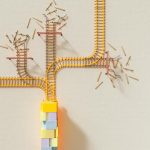neural-network
Neural Network: Unlocking AI’s Full Potential in 2025
Artificial intelligence continues to reshape our world, driving innovation across every sector imaginable. At the heart of this revolution lies the neural network, a powerful computational model inspired by the human brain. These intricate systems enable machines to learn, recognize patterns, and make intelligent decisions with unprecedented accuracy. But how exactly do they work, and what advanced architectures are pushing the boundaries of what AI can achieve in 2025?
Understanding the Core: What is a Neural Network?
A neural network is a series of algorithms that endeavors to identify underlying relationships in a set of data through a process that mimics the way the human brain operates. It’s a cornerstone of modern machine learning and deep learning, designed to process complex information.
From Biological Inspiration to Digital Brilliance
The concept of a neural network originated from attempts to model the biological processes of the brain. Each “neuron” in the network takes inputs, processes them, and passes the result to subsequent neurons. This allows the network to learn from data, improving its performance over time.
Key Components of a Neural Network:
- Input Layer: Receives the initial data, acting as the entry point for information.
- Hidden Layers: Perform complex computations on the inputs, extracting features and patterns. There can be one or many hidden layers, defining the “depth” of the network.
- Output Layer: Produces the final result of the network’s processing, such as a classification or a prediction.
- Activation Functions: Introduce non-linearity into the network, allowing it to learn more complex relationships.
- Weights and Biases: Parameters that the network learns during training, determining the strength of connections between neurons and influencing the output.
Exploring Advanced Neural Network Architectures
While the basic structure remains, specialized neural network architectures have emerged to tackle specific types of data and problems. These innovations enhance learning capabilities and efficiency.
Recurrent Neural Networks (RNNs) and Gated Recurrent Units (GRUs)
Recurrent Neural Networks (RNNs) are particularly adept at processing sequential data, such as text, speech, and time series. Unlike traditional feedforward networks, RNNs have loops that allow information to persist, creating a “memory” of past inputs. However, standard RNNs can struggle with long-term dependencies, where information from earlier steps is crucial but fades over time.
This is where Gated Recurrent Units (GRUs) come into play. GRUs are a more sophisticated variant of RNNs that address the vanishing gradient problem. They use “gates” to control the flow of information, deciding what to remember and what to forget, significantly improving their ability to capture long-range dependencies in sequential data. You can learn more about GRUs and their mechanisms here.
Convolutional Neural Networks (CNNs) for Vision Tasks
Convolutional Neural Networks (CNNs) are the go-to architecture for image and video processing. They excel at recognizing patterns in spatial data through convolutional layers that apply filters to detect features like edges, textures, and shapes. Their hierarchical structure allows them to build increasingly complex representations of visual information.
The Role of Squeeze-and-Excitation Models:
Squeeze-and-excitation (SE) models are a powerful enhancement to CNNs. They improve network performance by allowing the model to explicitly model interdependencies between channels of its convolutional features. Essentially, an SE block learns to adaptively recalibrate channel-wise feature responses, emphasizing more informative features and suppressing less useful ones. This leads to a significant boost in accuracy without a substantial increase in computational cost, making the neural network even more efficient for image recognition tasks.
The Impact of Neural Network Technology Across Industries
The practical applications of neural networks are vast and continue to expand, driving transformative changes in various sectors.
Transforming Healthcare with AI
In healthcare, neural networks are revolutionizing diagnostics, drug discovery, and personalized medicine. They can analyze medical images for early disease detection, predict patient outcomes, and identify potential drug candidates with unprecedented speed and accuracy. This leads to more precise treatments and better patient care.
Revolutionizing Finance and Trading
Financial institutions leverage neural networks for fraud detection, algorithmic trading, and risk assessment. By analyzing vast amounts of market data, these models can identify subtle anomalies and predict market trends, offering a competitive edge and enhancing security. For a broader look at AI’s impact, consider reports like the Stanford AI Index.
Enhancing Customer Experience and Personalization
From recommendation systems to natural language processing for chatbots, neural networks are at the forefront of improving customer interactions. They personalize experiences, offer tailored product suggestions, and provide efficient customer support, leading to higher satisfaction and engagement.
Optimizing Neural Network Performance: Best Practices
Achieving peak performance from a neural network requires careful attention to several key areas.
Here are crucial steps for optimization:
- Data Preparation and Feature Engineering: High-quality, well-processed data is paramount. This involves cleaning, normalizing, and transforming raw data into features that the network can effectively learn from.
- Training Strategies and Hyperparameter Tuning: Selecting appropriate optimizers, learning rates, batch sizes, and regularization techniques is critical. Hyperparameter tuning involves experimenting with different settings to find the optimal configuration for your specific problem.
- Evaluating Model Effectiveness: Robust evaluation using metrics like accuracy, precision, recall, and F1-score is essential. Cross-validation and understanding bias-variance trade-offs help ensure the model generalizes well to new, unseen data.
The Future of Neural Network Development
The field of neural networks is dynamic, with continuous advancements promising even more sophisticated AI capabilities.
Emerging Trends and Breakthroughs
Expect to see further developments in areas like explainable AI (XAI), making complex models more transparent, and federated learning, which allows models to train on decentralized data. Advancements in quantum computing could also unlock entirely new paradigms for neural network processing.
Ethical Considerations in AI
As neural networks become more integrated into society, ethical considerations surrounding bias, privacy, and accountability grow in importance. Developing fair, transparent, and robust AI systems is a critical challenge for the future.
Conclusion: Embracing the Neural Network Revolution
The neural network stands as a testament to human ingenuity, mimicking the brain’s complex learning processes to solve some of the world’s most challenging problems. From advanced architectures like GRUs and Squeeze-and-excitation models to their profound impact across diverse industries, these AI powerhouses are continually evolving. By understanding their mechanics and best practices, we can harness their full potential. The journey of AI is just beginning, and neural networks will undoubtedly lead the way.
Explore the future of AI with neural networks and discover how you can leverage these technologies to drive innovation in your field.
Artificial intelligence, neural network, deep learning, AI models, GRU, Squeeze-and-excitation, machine learning, AI breakthroughs, future of AI.
featured image: abstract neural network connections, AI brain illustration, futuristic data processing grid
Featured image provided by Pexels — photo by Markus Winkler









